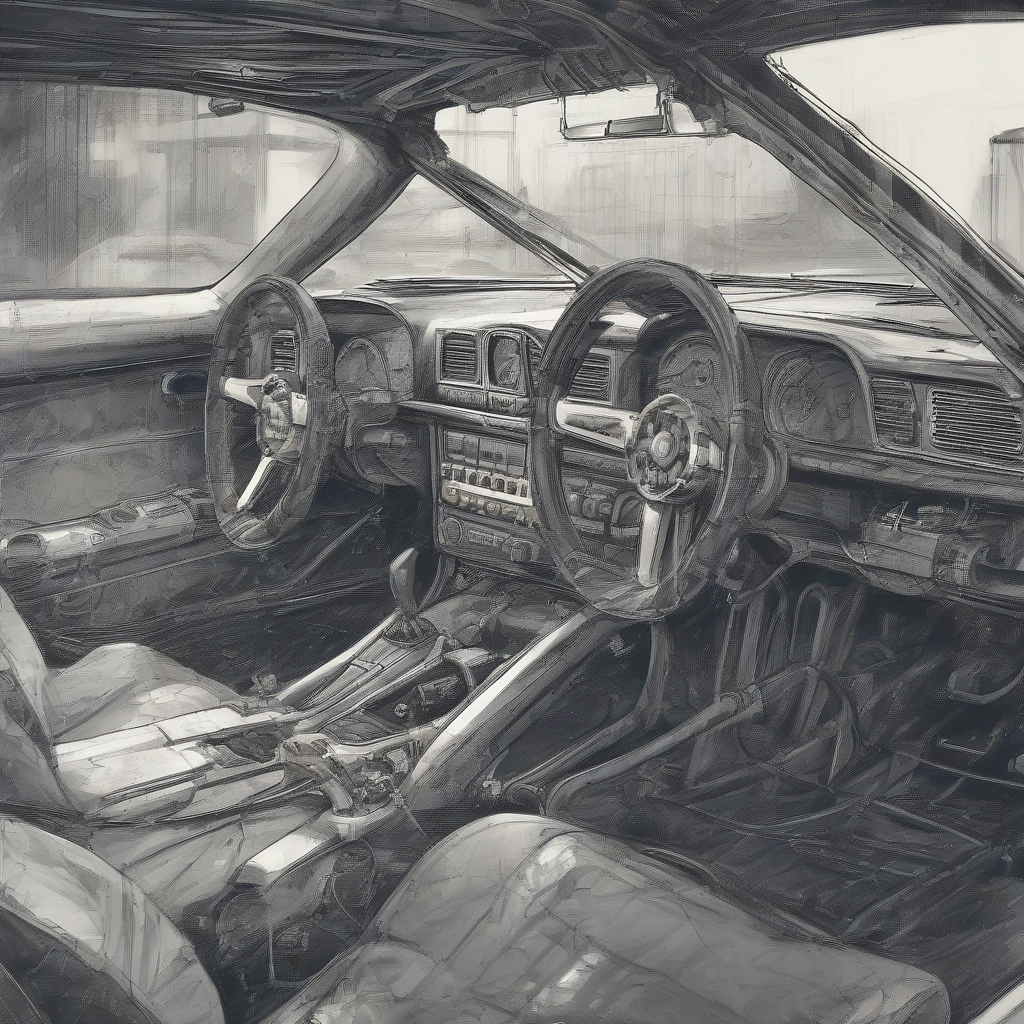Mastering the Automotive Mechanic’s Toolkit: A Comprehensive Guide to Essential Skills
I. Fundamental Mechanical Knowledge
- Understanding Automotive Systems: A solid grasp of engine operation (internal combustion, diesel, electric/hybrid), transmission systems (manual, automatic, CVT), braking systems (disc, drum, ABS), steering systems (rack and pinion, power steering), suspension systems (various types and components), electrical systems (battery, alternator, starter, sensors), and exhaust systems is paramount. This knowledge forms the basis for diagnosis and repair.
- Basic Automotive Physics: Mechanics need to understand principles of physics related to motion, force, pressure, and energy transfer as they relate to vehicle operation. This includes understanding torque, horsepower, friction, and the interaction of various mechanical components.
- Blueprint Reading and Technical Drawings: The ability to interpret technical manuals, schematics, and diagrams is crucial for accurately identifying parts, understanding system layouts, and following repair procedures.
- Vehicle Diagnostics: Modern vehicles rely heavily on onboard diagnostic systems (OBD-II). Mechanics must be proficient in using scan tools to retrieve diagnostic trouble codes (DTCs), analyze data streams, and interpret sensor readings to pinpoint problems.
II. Essential Hand Tools and Their Use
- Wrenches: Various types including open-end, box-end, combination, socket wrenches (metric and standard), torque wrenches (essential for precise tightening).
- Screwdrivers: Phillips, flathead, Torx, and other specialized screwdrivers in a range of sizes. Understanding when to use different types is crucial.
- Pliers: Needle-nose, slip-joint, locking pliers (vise grips), and others for gripping, bending, and manipulating parts.
- Sockets and Ratchets: A complete set of metric and standard sockets with extensions, and a selection of ratchets for efficient work.
- Specialized Tools: Pullers, extractors, valve spring compressors, timing tools, and other specialized tools depending on the specific repair task.
- Safety Equipment: Gloves, safety glasses, hearing protection, and appropriate clothing are essential to prevent injuries.
III. Engine Repair and Maintenance
- Engine Diagnostics: Identifying engine problems through listening for unusual sounds, checking for leaks, and using diagnostic tools.
- Oil Changes and Fluid Top-offs: Routine maintenance tasks essential for engine longevity.
- Spark Plug Replacement: Understanding spark plug gap and proper installation.
- Air Filter and Fuel Filter Replacement: Maintaining air and fuel quality for optimal engine performance.
- Timing Belt/Chain Replacement: A critical task requiring precision and knowledge of engine timing.
- Engine Overhaul: Major engine repair requiring extensive knowledge of engine components and assembly.
- Engine Diagnostics using Scan Tools and Data Analysis: Understanding how to interpret data from sensors and actuators.
IV. Transmission and Drivetrain Repair
- Manual Transmission Repair: Understanding clutch operation, gear shifting mechanisms, and troubleshooting common issues.
- Automatic Transmission Repair: Knowledge of automatic transmission components, fluid changes, and more complex repairs.
- Driveshaft and Axle Repair: Diagnosing and repairing issues with driveshafts, CV joints, and axles.
- Differential Repair: Understanding differential operation and performing repairs as needed.
- Transfer Case Repair (4×4 Vehicles): Diagnosing and repairing issues with four-wheel-drive systems.
V. Braking System Repair
- Brake Pad and Shoe Replacement: Routine maintenance ensuring safe braking performance.
- Rotor and Drum Resurfacing/Replacement: Maintaining smooth braking surfaces.
- Brake Line and Hose Repair/Replacement: Ensuring proper hydraulic brake function.
- Master Cylinder and Wheel Cylinder Repair: Addressing leaks and malfunctions in the hydraulic system.
- ABS System Diagnostics and Repair: Understanding and troubleshooting Anti-lock Braking Systems.
VI. Steering and Suspension Repair
- Steering Gearbox Repair: Diagnosing and repairing power steering systems.
- Tie Rod and Ball Joint Replacement: Maintaining proper steering geometry and handling.
- Shock Absorber and Strut Replacement: Improving vehicle ride and handling.
- Spring and Suspension Component Repair: Addressing issues with coils, leaf springs, and other components.
- Wheel Alignment: Properly aligning wheels for optimal tire wear and handling.
VII. Electrical System Repair
- Battery Testing and Replacement: Ensuring proper starting and charging.
- Alternator Testing and Replacement: Maintaining proper charging of the battery.
- Starter Motor Repair: Diagnosing and repairing starting problems.
- Wiring Diagnosis and Repair: Troubleshooting electrical problems using multimeters and schematics.
- Sensor Diagnosis and Replacement: Understanding various sensors and their role in the vehicle’s operation.
- Lighting System Repair: Diagnosing and repairing malfunctioning lights.
VIII. Exhaust System Repair
- Exhaust System Leak Detection and Repair: Identifying and fixing leaks in the exhaust system.
- Exhaust Component Replacement: Replacing mufflers, catalytic converters, and other parts.
- Oxygen Sensor Replacement: Replacing faulty oxygen sensors that impact emission control.
IX. Advanced Skills and Specializations
- Engine Performance Tuning: Optimizing engine performance for increased power or fuel efficiency.
- Diesel Engine Repair: Specialized knowledge of diesel engines and their unique characteristics.
- Hybrid and Electric Vehicle Repair: Understanding the complexities of hybrid and electric powertrains.
- Automotive Air Conditioning Repair: Diagnosing and repairing air conditioning systems.
- Body Repair and Painting: For those interested in combining mechanical work with bodywork.
X. Soft Skills for Automotive Mechanics
- Problem-Solving Skills: The ability to diagnose complex problems and develop effective solutions.
- Troubleshooting Skills: Systematically identifying and resolving issues using diagnostic tools and techniques.
- Communication Skills: Effectively communicating with customers, explaining repairs, and providing estimates.
- Time Management Skills: Managing time efficiently and completing jobs within deadlines.
- Organization Skills: Maintaining a clean and organized workspace to ensure efficiency and safety.
- Customer Service Skills: Providing excellent customer service, building trust, and fostering positive relationships.

